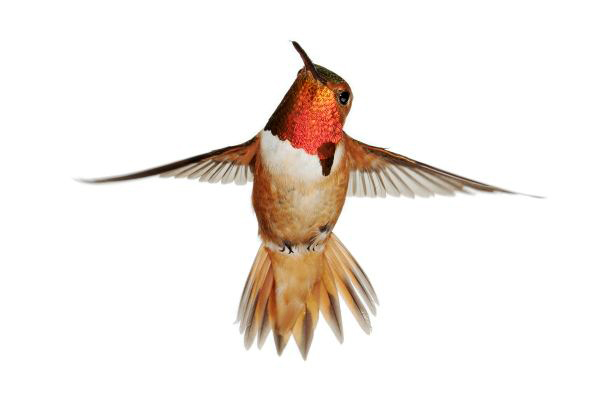We're open daily this holiday! View holiday hours
Science News
Capturing Hummingbirds
September 13, 2011

How do you understand a hummingbird? Simple—with a high-speed camera, wind tunnel and sometimes, olive oil.
Hummingbirds can flap their wings as fast as 90 times per second, fly up to 34 miles per hour and even fly backwards! Recently, scientists studying these fast, feathered friends have employed cameras that take up to 1000 images per second to understand how the birds move, eat and even court potential mates.
Scientists at the University of Montana apply all of the methods above (including the olive oil) to understand how the hummingbird flies (“We joke that the lab smells like pizza”), while Yale and UC Berkeley researchers leave the olive oil behind to study the sounds hummingbirds make when courting.
The hummingbird’s name comes from the sound its rapid flapping wings make, but a new study, published in Science last week, also shows that their tail feathers make sounds.
Using the camera and the aforementioned wind tunnel, the researchers tested the sounds tail feathers made individually when a gentle and not-so gentle breeze is applied. ScienceNOW reports the results:
At gentle breezes, the feathers just ruffled, but when the winds sped up to around the birds' normal dive velocities, about 7 to 20 meters per second, something strange happened: The feathers started to ripple rhythmically…
The rippling causes vibrations that emit sound—in fact, a different sound for each of the 14 different species the researchers tested! And, when the researchers tested two feathers together, instead of one, the sound was louder.
Male hummingbirds make these fast-speed, feather-vibrating dives while courting, in order to impress the ladies (female hummingbirds) so the researchers believe that these tail feather sounds may help the males’ cause. Lead author Christopher Clark of Yale hypothesizes that male hummingbirds have thus evolved an ability to generate sounds with their tail feathers during courtship. Female hummingbirds possibly prefer to mate with the best flyers because of their relatively high fitness so the females use the volume of a suitor's tail feathers as a proxy for his fitness.
Watch and listen to videos of these feathers produced by Clark available on ScienceNOW or Wired.
Image: Anand Varma